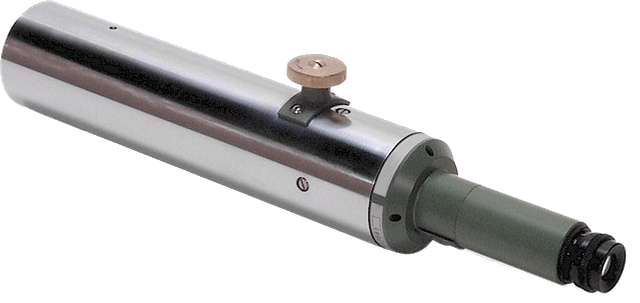Inclinometers and Optical Tools: Precision in Aerospace and Marine Operations

Precision is the cornerstone of both aerospace and marine engineering, where the smallest miscalculation in angle or alignment can lead to serious mechanical failures, safety issues, or inefficiencies. In these highly specialized fields, tools like inclinometers and optical measuring instruments are indispensable. Whether you’re crafting the perfect propeller blade, measuring slip angles on a high-speed aircraft, or adjusting the trim on a marine vessel, accurate angle measurement is not just helpful—it’s essential.
Evolution of the Inclinometer
Inclinometers—also known as tilt meters or clinometers—are instruments used to measure angles of slope, elevation, or tilt with respect to gravity. Over the years, these incline measurement tools have evolved from simple bubble-based mechanisms to highly sensitive digital instruments. Early mechanical inclinometers relied on pendulums or fluid levels to detect angles. Today’s devices, particularly in aerospace and marine sectors, use MEMS (Micro-Electro-Mechanical Systems), laser gyros, or accelerometer technologies to deliver precise digital readings in real time.
For instance, an inclinometer for aircraft manufacturers is typically a high-precision device capable of sub-degree measurements. These inclinometers are vital during both the design and testing phases. Engineers use them to ensure that components such as wings, rudders, and propellers are perfectly aligned to reduce aerodynamic drag and increase fuel efficiency.
Inclinometers in Aerospace and Marine Applications
In the aeronautics field, inclinometers serve several critical roles. During propeller manufacturing, they help technicians measure blade pitch angles to ensure uniform thrust generation across all blades. Any misalignment can lead to vibration, structural stress, and a decrease in propulsion efficiency. Similarly, slip angle measurements—important for determining lateral movement during flight—are captured using digital inclinometers integrated into onboard flight systems or test rigs.
In marine operations, inclinometers are equally essential. Ships and submarines use them to monitor trim, heel, and pitch angles to maintain stability and control. Real-time tilt monitoring helps operators adjust ballast or redistribute weight more efficiently, especially in dynamic environments where wave motion and cargo shifts can change a vessel’s center of gravity.
Optical Tools in Precision Engineering
While inclinometers handle angular measurements with gravity as a reference, optical tools are widely used to ensure component alignment, measure small distances, and inspect structural integrity. Both aeronautical engineers and marine navigators rely heavily on optical devices for maintenance, diagnostics, and assembly.
A reputable custom optical equipment manufacturer typically produces highly specialized tools tailored for use in confined, hard-to-reach places or harsh environmental conditions. These tools support the precision requirements of aerospace and marine sectors, where routine checks can mean the difference between operational success and costly failures.
Here are five optical tools frequently used in both fields:
1. Borescopes – Used to visually inspect internal parts of aircraft engines and ship turbines without disassembly.
2. Autocollimators – Measure very small angular displacements, often used for aligning gyroscopic components or navigation instruments.
3. Theodolites – Though traditionally a surveying tool, they are used in shipbuilding and aircraft construction for alignment and layout verification.
4. Laser Interferometers – Used to calibrate machine tools and ensure flatness and straightness in precision manufacturing.
5. Optical Micrometers – Measure the dimensions of mechanical parts with extreme accuracy, especially when tolerances are within microns.
These tools require not only precision in manufacture but also ongoing maintenance. That’s where optical tool repair services come in—ensuring that even the most finely calibrated instruments continue to perform to exacting standards.
The Role of the Manufacturer
Whether you’re selecting an inclinometer for aircraft manufacturers or sourcing bespoke alignment scopes for shipyards, choosing a high-quality manufacturer of angle measuring tools is paramount. Precision instrumentation is not a one-size-fits-all endeavor. Aerospace and marine environments are uniquely demanding, requiring instruments that can operate reliably under vibration, temperature variation, and humidity.
Furthermore, calibration is not a once-and-done operation. Instruments degrade over time, especially those exposed to frequent use or harsh environments. A reputable supplier won’t just manufacture new tools—they’ll also offer optical tool repair services and recalibration programs to ensure every device stays within specification.
Why Precision Engineering Matters
Precision engineering ensures that complex systems—from commercial aircraft to naval vessels—operate safely, efficiently, and reliably. Even a minor deviation in alignment or angle can translate into significant performance losses or catastrophic failures. With global air traffic increasing and marine logistics becoming more intricate, the demand for reliable, accurate measurement tools has never been greater.
Tools like inclinometers, laser-based optical devices, and gyroscopic instruments aren’t just accessories; they’re vital elements in the safety and performance chain. Skimping on quality or calibration can result in downtime, regulatory violations, or worse.
The growing complexity of aircraft and marine vessels means that the need for high-precision measuring instruments is only increasing. Whether you’re involved in fabrication, repair, or field operations, the tools you use must deliver dependable accuracy every time.
Ultimately, entrusting your equipment needs to a trusted manufacturer of angle measuring tools—one that also specializes as a custom optical equipment manufacturer—ensures you benefit from expertly built devices and reliable calibration. In industries where there’s no margin for error, the right instruments—and the right people behind them—make all the difference.